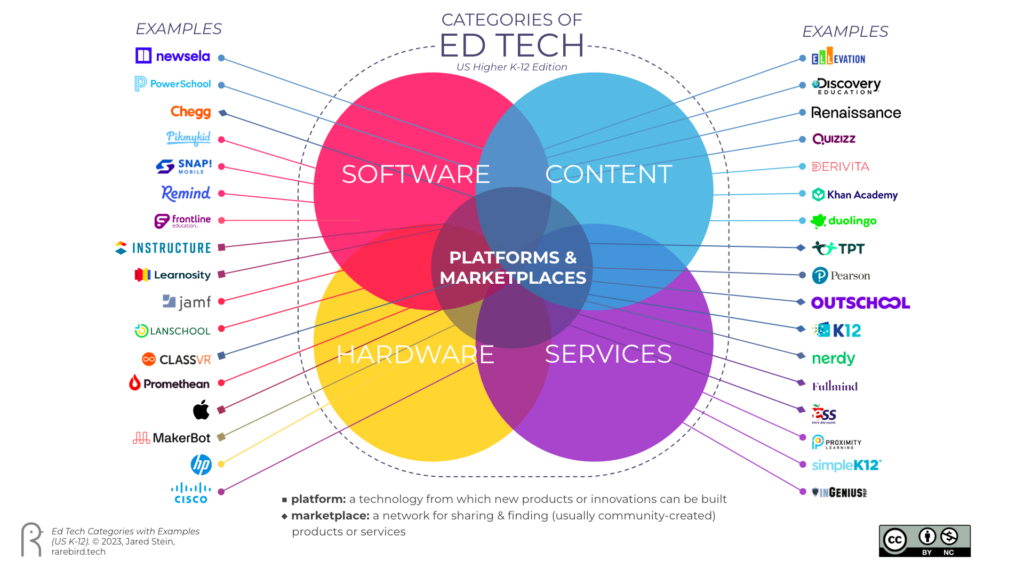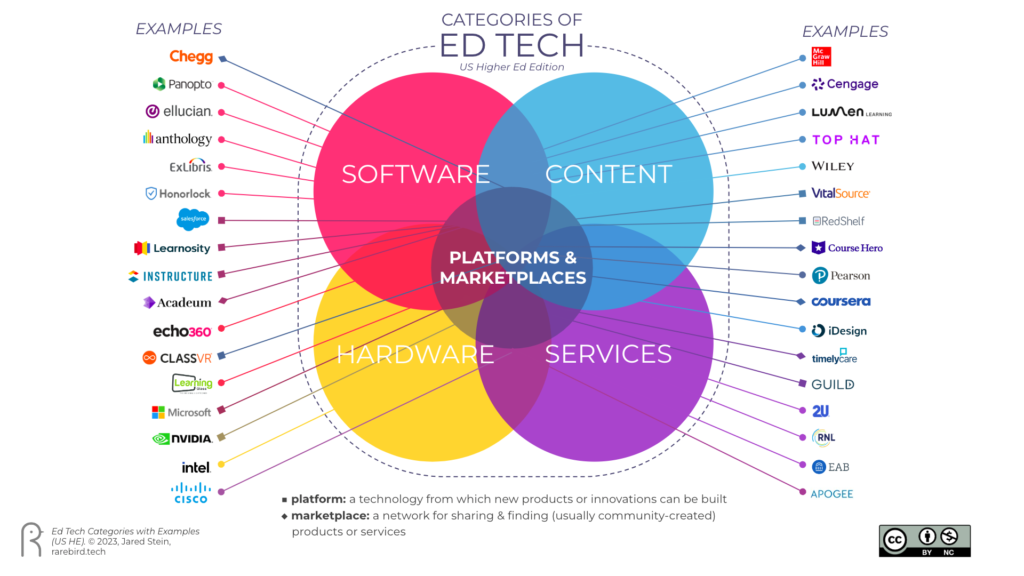Your cart is currently empty!
Visualization of Ed Tech Categories
“Ed Tech” is a loose term. From a school’s perspective, it’s often used to refer to software specific to teaching and learning. From an investor’s perspective, it may refer to any company who’s business is focused on serving education.
Rarebird’s definition of “Ed Tech” includes four major categories of offerings:
- Software — specifically software that enables teachers, students, or staff to accomplish part of their educational role.
- Content — specifically digital content.
- Hardware — when that hardware is offered by a company that has specifically targeted education.
- Services — but only those services that also involve hardware, software, or digital content.
Each of these categories can be sub-divided, e.g. software for teaching and learning, content for assessment, hardware for classrooms, services for admissions and enrollments, etc.
There’s an important trend toward delivering ed tech via platforms and marketplaces. A platform is technology from which new products or innovations can be built. A marketplace is a network for sharing & finding (usually community-created) products or services.
The following diagrams were created to define these categories, using a sample of contemporary ed tech companies to illustrate the potential for overlaps:


A few notes on these diagrams:
- These are not market maps. They each use just a small sample of ed tech companies to illustrate the categories and their overlap.
- These do not represent market size. The shapes simply define category boundaries.
- These are imperfect for the sake of simplicity. Any 2-dimensional representation struggles to represent all possible overlaps. For example, there are companies at the edges, e.g. Software + Services, that can’t be represented neatly.
You’ll also note that these diagrams maintain a strict definition of “platform”. A platform is not simply…
- …a broad range of integrated tools and capabilities — that’s a system.
- …a collection of interrelated products — that’s a suite.
A platform must enable users to create their own products or innovations and share those with others.
One of the purist examples of an ed tech platform today is Learnosity, which is an assessment platform used by both other ed tech companies and even institutions to create quizzing and testing products that are used or sold by others.
There are fuzzier examples, too: Instructure offers a suite of products, but it’s flagship Canvas LMS is also a platform, as Canvas has enabled both customers and other companies (e.g. Aspiredu, Cidi Labs, Atomic Jolt, eLumen) to build totally new products based on its open APIs.
That said, it’s quite normal to market ed tech products as platforms these days, as “platform” sounds more capable, more mission-critical, or just less stodgy than “system”. (Ironically, Instructure markets itself as “a learning platform” in this more popular, generic sense of the term, too.) But over-using the term waters down and confuses what a technology platform actually is and why it’s important.
